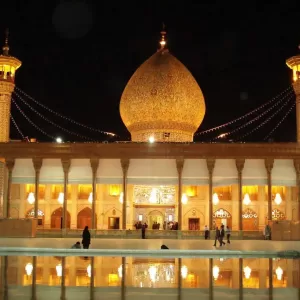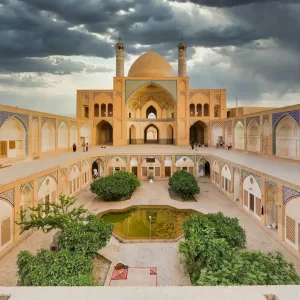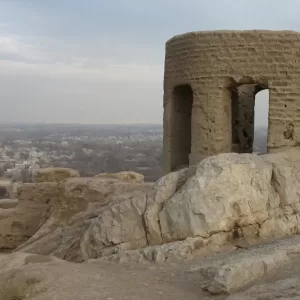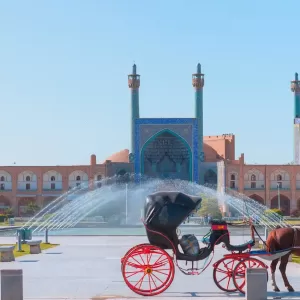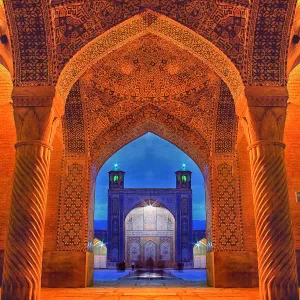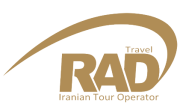Iran
Culture
Identity
The culture of Iran is one of the oldest in the Middle East. Iranian Identity, a collective feeling by Iranian peoples of belonging to the historic lands of Iran
Iranian Manner
Iranians are famous in the world for their hospitality and gregarious manners. Together with the people of India and China, Iranian people boast the most ancient civilization in Asia which has brought along in the course of centuries a rich multifaceted culture and a plethora of customs each attributed to one of its many ethnicities. This long history of civilization has been shaped by many historical events from the first declaration of human rights issued by Cyrus the Great and the rule of ancient Persian kings to the Islamic period that further enhanced the already rich culture of Iranians. The behavior and manners of the people in Iran are the result of these centuries-old influences. Among the basic rules of etiquette in Iran one can mention respect to the elders and helping the poor. As for souvenirs from Iran, there are many items from which you can choose. There are various Iranian gift shops that provide you with many different ideas and since Iran is deservedly famous for it handcrafts, you can be sure you won’t go back home empty-handed. As for the culture of giving gifts, tourists often wonder about what to bring to a Persian dinner or other formal gatherings. The most common thing is to buy cookies and other kinds of sweets. There isn’t much difference between Iranian dining etiquette and those of the western people.
Language
The major language in Iran, former persia, is Farsi. Aside from Iran, Farsi is spoken in Afghanistan, Tajikistan and the Pamirs Mountains. In keeping their native tongue, Persians expanded the nature of Islam from a religion with primary Arabic origins to a more encompassing world religion. Persian language became the major literary instrument for many poems and religious works.
Poetry
Persian poetry is some of the most beautiful poetry in the world and the Persians cultivated four unique types of poetry; the “epic”, the “ghasideh” a purpose poem, the “masnavi” a narrative poem, and the “ghazal” a lyrical poem. Ferdowsi, author of Shahnameh, took 35 years to write his epic poem about the heroes of Ancient Persia.In the 13th and 14th centuries Sa’adi, Rumi and Hafez perfected the ghazal,lyrical poems but filled with passion. And Rumi’s Masnavi is considered one of the most beautiful Persian literary works, if not of all Islamic writings.
Art
Persian art or Iranian art has one of the richest art heritages in world history and has been strong in many media including architecture, painting, weaving, pottery, calligraphy, metalworking and sculpture.
The most notable Persian artwork is seen in the masterful woven carpets. Persian weaving flourished in the second half of the 15th century during the Safavid Dynasty.
The cities of Ardabil, Tabriz, Kashan, and Isfahan are the chief producers of Persian carpets. The colorful displays are usually designs taken from book covers, but geography can influence the tapestries as well.
Religion
According to the CIA World Factbook, around 90–95% of Iranians associate themselves with the Shia branch of Islam, the official state religion, and about 5–10% with the Sunni and Sufi branches of Islam. The remaining 0.6% associate themselves with non-Islamic religious minorities, including Bahá’ís, Mandeans, Yarsanis, Zoroastrians, Jews, and Christians. The latter three minority religions are officially recognized and protected, and have reserved seats in the Iran parliament. Zoroastrianism was once the majority religion, though today Zoroastrians number only in the tens of thousands. Iran is home to the second largest Jewish community in the Muslim World and the Middle East. The two largest non-Muslim religious minorities in Iran are the Bahá’í Faith and Christianity. The Bahá’í Faith, historically the largest religious minority in Iran, is not officially recognized, and has been persecuted during its existence in Iran, Christianity, the largest non-Muslim minority religion that is recognized by the Iranian government, has the largest annual growth rate of all religions in Iran.

